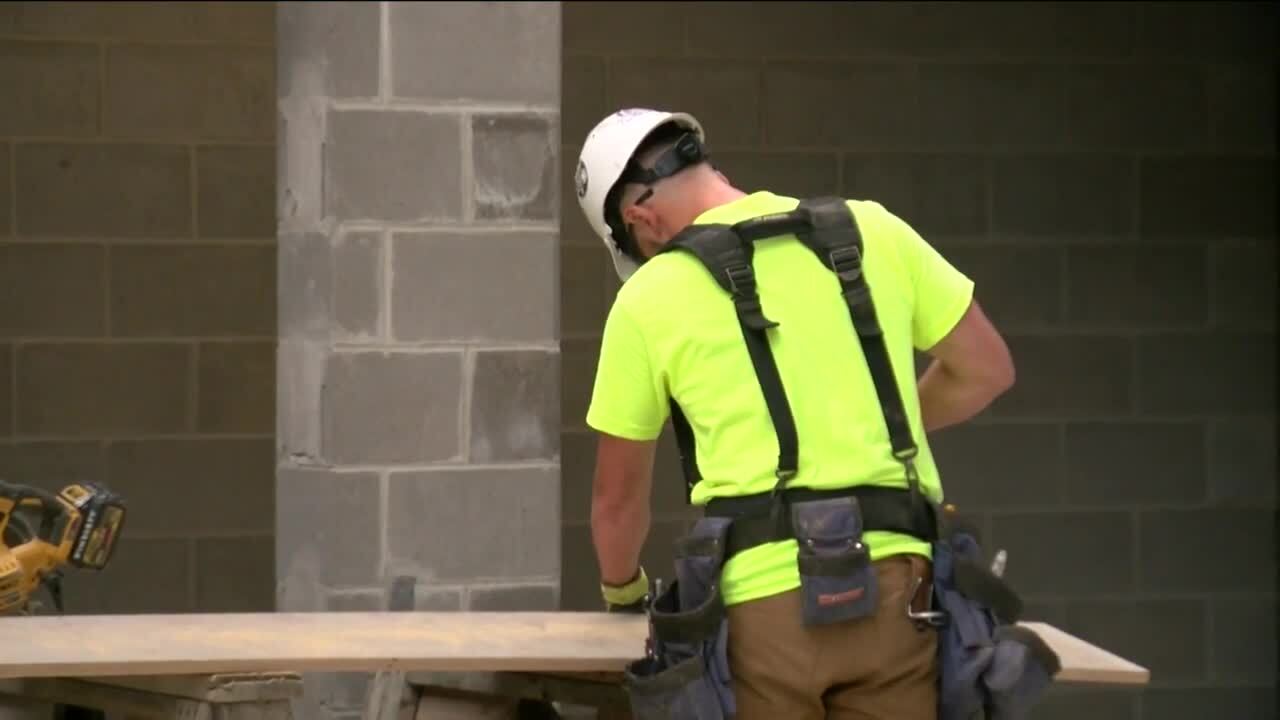RACINE — Post-pandemic higher education looks different. What does the future hold for high school students moving on to the next step?
For some perspective on the college versus trade school debate, we attended a graduating senior’s “signing day.”
Joe Lynch, 17, knew from a young age, he wanted to build things.
“Construction has always been one of my bigger passions,” Lynch said.
Just one day after graduating from Horlick High School, Lynch signed his contract as a “registered apprentice”, and is already working for Findorff, building the new Racine Aquatic Center.

“What’s really cool, is that whenever I drive past this place, I can tell people I helped build it,” Lynch said.
Lynch is making $19.75/hour with full benefits. That will jump to $67.33/hour by the time he’s 21, because in just four years, he will become a journeyman.

Horlick High School construction teacher, Darrell Perry, is trying to get more young people to follow this path.
“He’ll make more than anyone that’s taught him in high school, that’s for sure,” Perry said. “You get a great retirement package. It’s a fantastic career.”
But enrollment to learn a trade through the Wisconsin Technical College system dropped 25 percent since 2010. Part of the problem is the underlying stigma often associated with choosing a trade over college.
“We need to start normalizing celebrating kids going into the workforce straight out of high school,” said Joshua Johnson, the state director of Wisconsin Apprenticeship, a branch of the Department of Workforce Development. “We celebrate them going into sports, college, or military. We need to celebrate them making a choice to go into the workforce because it is a really responsible choice, and it doesn’t mean you can’t choose to go to a college or university later after saving money.”

According to savingforcollege.com, Americans are more burdened by student loan debt than ever before. Among the class of 2019, 69 percent of college students took out student loans, and graduated with an average debt of $29,900.
“As we went through the decision-making process with Joe, we talked about how we must consider the value of the debt we’d be carrying from a college or university,” said Joe’s father, Michael Lynch.
There is some recent evidence that the negative perception of going into a trade has shifted through the pandemic.
Since 2015, Findorff has supported a total of 31 high school apprentices, like Lynch. Right now, the company has 11 high school apprentices on its team.
“Eleven is the most we’ve ever had at any one time,” says Mike Novak, who oversees Lynch’s work at Findorff. “It’s neat to see. It’s also really important because these construction jobs are always needed. We have older generations retiring.”
To break down the cost difference between college and trade school, Big Future College Board reports the average cost nationwide to attend an in-state, four-year public college is around $9,400 per year. A trade school ranges anywhere from $5,000 to $15,000 total. A two-year community college averages somewhere in the middle of those numbers.




